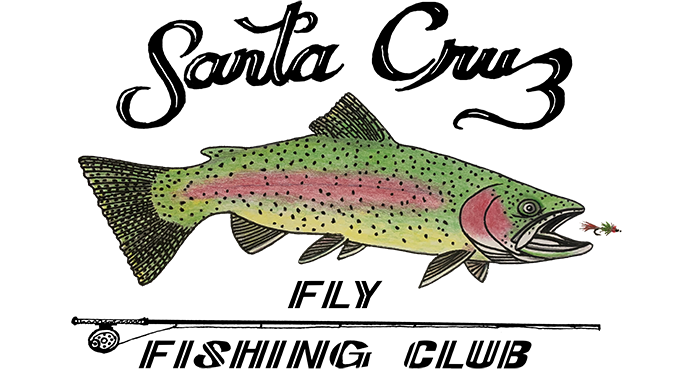The shelter-in-place directives and changes in DFW regulations have caused many of us to postpone or cancel our plans to fish this spring. If you feel the need to re-connect with your favorite sport, consider this possibility:
Find a suitable place to cast and devote fifteen minutes to one hour of practice time a day to maintaining your skills or learning something new. At home or nearby is best, as you will be more likely to pick up that rod spontaneously and will put in more time; but, if necessary, any public space with an open, grassy area will do fine. In a pinch, your driveway or the street may suffice (though you will want to dedicate an old and disused line for the purpose, as asphalt and concrete are hard on high-tech coatings.) Once you start whipping that rod around and throwing a line, you will likely find that other people stay at least the recommended six feet away. A few simple props (hula hoops for accuracy, soccer cones for distance or for specialty techniques like curve casts) are helpful but not really necessary. The important thing is to work on upgrading your skills. If you need suggestions for what to focus on, you may want to look at the Fly Fishing International skills challenges. They offer three levels – bronze, silver, and gold – each of which involves a series of tasks that casters of increasing levels of competence should master. (The skills challenges can be downloaded here: https://flyfishersinternational.org/Education/Learning-Center/Casting/Casting-Skills-Challenge.) In my experience, even well-seasoned casters seldom succeed at every one of the tasks on the bronze challenge on the first try, but you’ll be amazed at what a little practice can do.
If you want to up your game and are someone who learns best from books, try consulting the classics by Mel Krieger (The Essence of Fly Casting), Joan Wulff (Fly Casting Techniques), and Bill Gammel (The Essentials of Fly-Casting). However, many people find that a more visual approach is helpful. Our club’s library of DVDs includes some relevant titles, but in this time of social distancing, a more readily available alternative is the Internet. A quick search on youtube.com will connect you to an overwhelming variety of instructional videos on almost any casting technique you wish to explore and at any skill level from beginner to advanced. Here are a few that I have found especially easy to understand, insightful, or entertaining:
Peter Kutzer is Orvis’s resident casting instructor. You may have met him at the Pleasanton show in February (which must now seem a long time ago because it happened just as we were all becoming aware of Covid-19.) He offers an entire series of professionally produced videos on a wide variety of subjects, several of which are indexed here: https://www.youtube.com/results?search_query=peter+kutzer+fly+casting
Australian Casting Champion Peter Hayes has an appealing series of videos (the production values of which are, unfortunately, highly variable), all delivered with good humor and in an engaging Aussie accent: https://www.youtube.com/results?search_query=peter+hayes+fly+casting
And for those who want a more in-depth treatment of both the theory and practice of fly casting, you may want to work your way through the many subjects covered in Paul Arden’s Fly Casting Manual on sexyloops.com (http://www.sexyloops.com/flycasting/index.shtml). His explanations can be a little harder to follow, but he has thought through the physics of casting in depth.
One instructor whose explanations I find particularly clear is Carl McNeil. He has a complete instructional DVD for sale on the Echo Fly Fishing site, but a few of his videos are available free on youtube at: https://www.youtube.com/results?search_query=carl+mcneil+fly+casting
If you have a favorite site or instructor of your own, let me know so they can be shared in a future issue of the newsletter. Until we are able to gather again on our favorite lakes and streams, a little coronavirus-casting in the back yard is a great way to stay limber and sharp, ready to return to the water when the all-clear sounds.
Posted on May 20th, 2020
